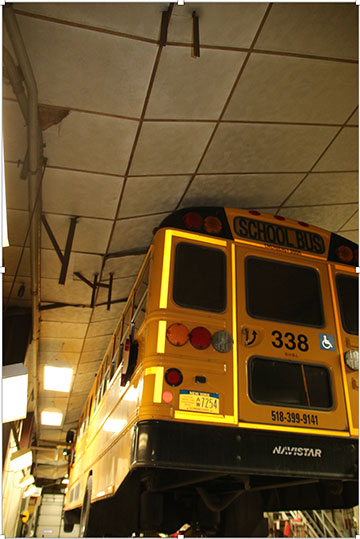Districtwide Critical Infrastructure Needs, Including New Transportation Facility
Estimated $14.85 million in upgrades, repairs and new space
Just like a home, district buildings get constant wear and tear, both outdoors from the sun and snow and indoors from daily activities. Multiply that wear and tear a hundred times and you’ll have an idea of what happens to BH-BL’s five schools, which serve anywhere from 400 to 1,200 active students plus staff daily.

BH-BL’s buildings have become outdated in other ways too. People use more technology to learn, communicate, and share information so school infrastructure needs to keep pace as well.
The BH-BL tradition is to address these issues in five-year cycles—a process that began in 1983 as a way to identify, fix, and fund its most pressing infrastructure needs.
The critical infrastructure improvements being proposed include:
- Replacing the oldest and most deteriorated areas of the district’s 11 acres of roofing.
- Renovating bathrooms in the worst condition in all five schools.
- Renovating the high school girls locker room showers.
- Replacing outdated kitchen equipment districtwide.
- Replacing insufficient HVAC units in the high school gym and chorus room, and adding air conditioning in the chorus room.
- Replacing classroom asbestos floor tiles and damaged ceilings districtwide.
- Improving classroom electrical access, installing more outlets.
- Replacing old water piping and valves, upgrading hot water units.
- Replacing the main electrical switch gear at the middle school.
- Reconfiguring Charlton Heights front parking lot to allow for safer student drop-off and pick-up zones and additional visitor parking.
New Transportation Facility
A large part of the proposed critical infrastructure needs is the construction of a new transportation building ($7.65 million). The existing facility was built in 1957 at a time when enrollment was one-third of what it is today and the district owned and serviced only 10 small buses. Today, the district maintains a 70-bus fleet to transport more than 3,100 students to and from school, field trips, athletic events, and more than two dozen other educational locations.
The transportation facility has a number of issues, including an insufficient number of service bays that are too narrow and short for today’s buses, deteriorating vehicle maintenance pits and floors, and limited storage.
“Right now we are looking at a building that is in danger of becoming inadequate for the maintenance of our fleet,” says Superintendent Patrick McGrath. “A recent study of our transportation service conducted by an outside agency shows that we offer family-friendly, safe, and efficient busing services to our families. We want to ensure we have the means to continue to do that.”

The new facility would be built on the current site and include six modern-day service bays with lifts, a training room for bus drivers, storage space for repair parts, and adequate space for the 107 members of the transportation department. The new building would also meet state and federal transportation regulations, which weren’t required in 1957.
“When the Capital Project Committee toured the garage, I was shocked to learn our buses do not properly fit in the service bays and that much of the maintenance work is being done on the pavement outside,” says James Ireland, a BH-BL parent and committee member. “This is really an inefficient way to work and impacts how quickly we get buses back on the road. Simply put, our 60-year-old bus garage does not provide the space or resources we need today. By investing in a new transportation facility, we are investing in the continued safety of our buses.”
If approved, the maintenance building at Pashley Elementary School would be relocated to the current transportation facility and additional parking would be added at Pashley.


